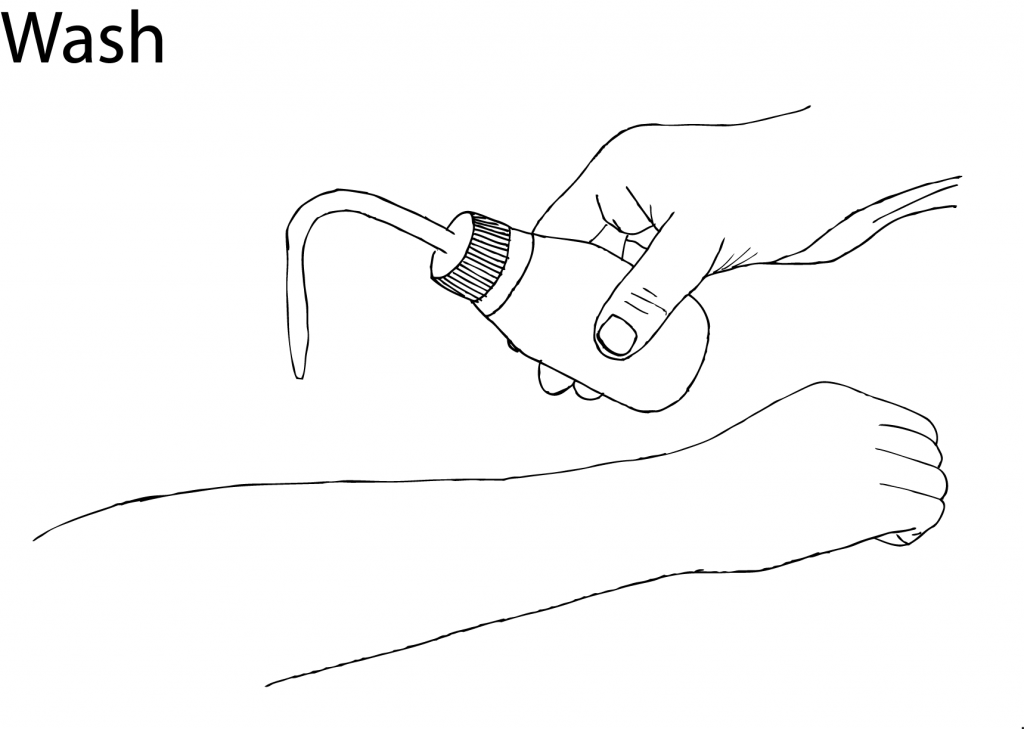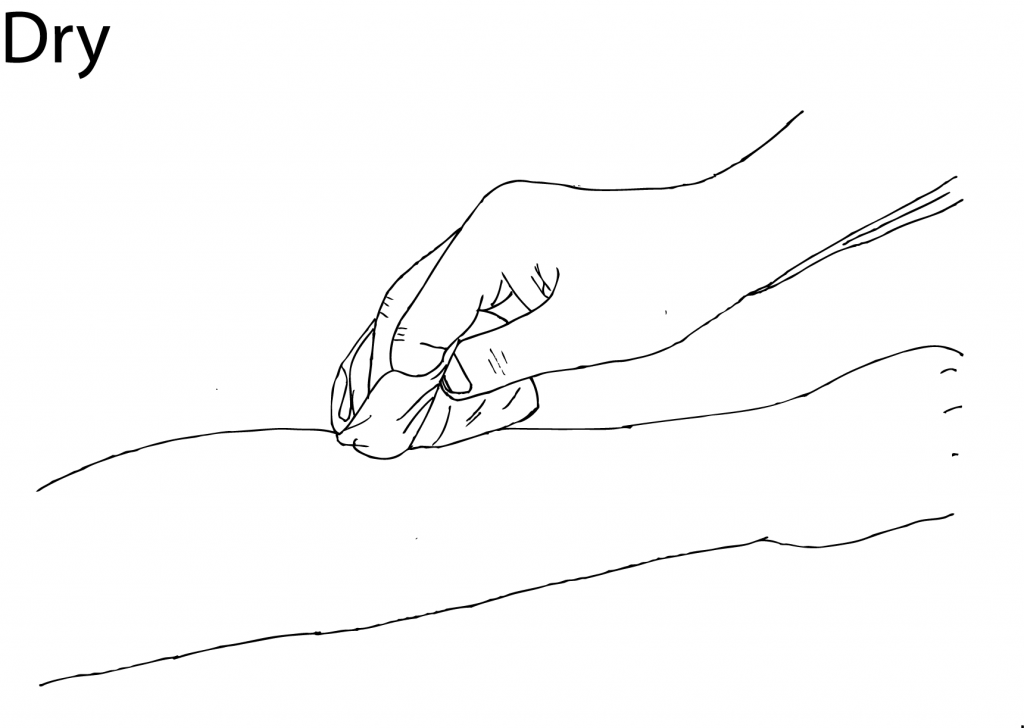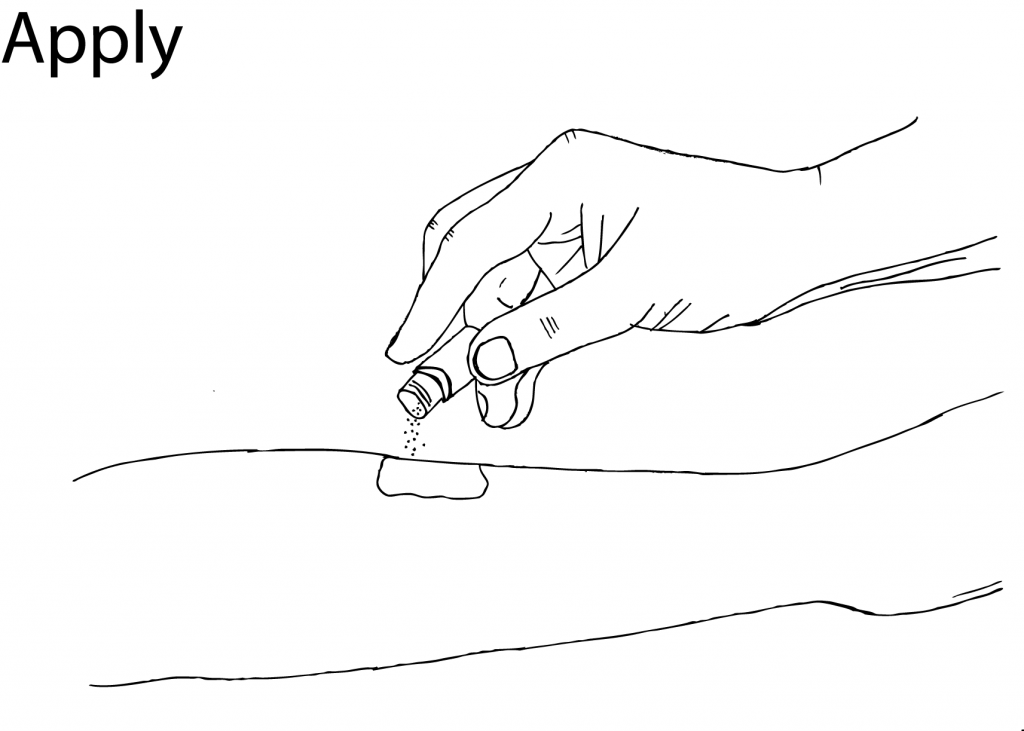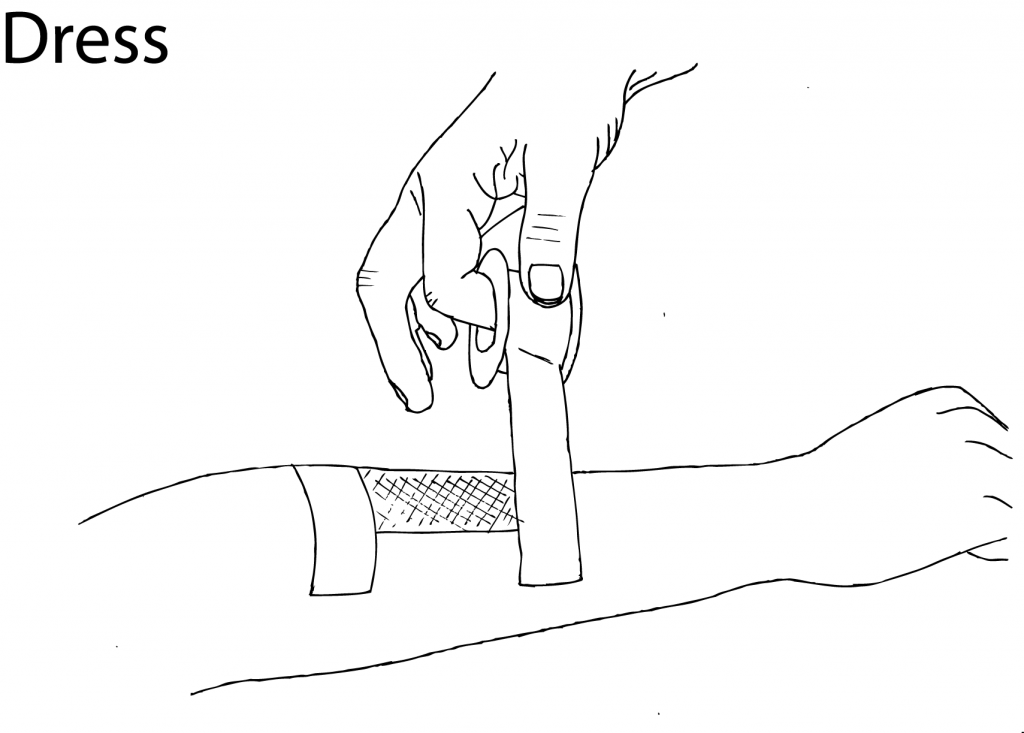













Amicapsil’s effect on pressure injuries
Download Publication
Download Publication
Both studies find 100% closure rates
for acute and chronic pressure injuries
Effective on antibiotic and antiseptic resistant wound infections.
Effective in immunocompetent and immunocompromised persons.
NH ( patient)
NH ( patient)
NH ( patient)
Only natural ingredients
Only natural ingredients
Only natural ingredients
One course of antibiotic release the same amount of carbon as a car driving around Earth 1.47 times.
VH (patient)
VH (patient)
VH (patient)
it is biologically recyclable and does not require the use of chemicals, plastics or antimicrobials.
How to use Amicapsil and Amicapsil-SCI
Watch our three videos, which describe in detail how to use Amicapsil. The first video covers the first day of use and the subsequent two, how to continue the use of Amicapsil until wound closure. Activate subtitles by pressing on CC.

Most common error:
The wound is not washed thoroughly. It needs to be rinsed for several minutes with tap-water at a good pressure.

Most common error:
The wound should not be completely dry. Apply Amicapsil while the wound surface and the surrounding skin are still moist.

Most common error:
The layer of Amicapsil should be unbroken and must cover the wound edges. Use a finger to rub a thin layer into any affected skin around the wound.

Most common error:
Air must be able to circulate across the wound surface. Amicapsil uses the force of evaporation to function and, without this, it will not work. Do not use synthetic dressings – only woven 100% cotton gauze swabs.
DO NOT use a fan to increase the airflow. A small air-pump can be used if you need to sit on the wound. Please contact us for details.
Repeat this procedure daily until the wound shows no signs of infection or necrosis.
In non-chronic wounds this, on average, will be 3-5 days.
After ceasing the use of Amicapsil, the wound should be dressed as above and left completely undisturbed to heal.The dressing can be changed weekly or biweekly – unless the wound gets wet as that would prompt a wash and dressing change.
- Amicapsil has not been associated with wound irritation or contact sensitisation (allergy).
- The components of Amicapsil have not been found to cause toxicity.
- Amicapsil is not absorbed by the body.
- Amicapsil can be removed by simple irrigation with water.
The longer version
1 Remove dirt, pus, dead tissue, slough, and very old scabs or other evidently inappropriate material from the wound.
2 Wash the wound with plenty of clean tap water. A wash-bottle, or alternatively a large syringe, will allow a good cleaning pressure. If you prefer, you can use saline. Do not use antimicrobials such as antiseptics or antibacterial rinsing solutions or soaps for rinsing.
3 Gently dab the wound dry with a gauze swab.
4 Sprinkle Amicapsil in an even layer 1-3 mm thick, directly onto the entire wound surface. This includes the visible area, all crevices, beneath loose flaps of skin and any undermined areas, all sides of the wound and all surfaces lining any tunneling. Cover the wound edges well, extending to an area 5 mm from the wound edge, onto the unbroken skin surrounding the wound opening. If the area surrounding the wound area is red and inflamed, very gently rub Amicapsil into the red area.
5 To keep the Amicapsil in place on the wound, cover it with a lint-free 100% gauze swab and fasten it along the edges using sticking plaster tape. If the wound is covered with Amicapsil all over the surface, the gauze will not stick to the surface.
6 Daily, remove any pus and dead tissue (yellow slough) with a moist gauze. Then wash with plenty of tap-water, preferably using water from the shower head to clean out all corners and crevices. Then apply Amicapsil and a covering dressing as described above.
7 The day there is no more yellow slough on the wound surface and there is no exudate on the secondary dressing upon removal, discontinue the use of Amicapsil. Just wash the wound in the shower without touching the wound surface. Dab it dry very gently. Apply a N-A dressing from Systagenix, not the N-A Ultra and not a different dressing with NA in its name. Repeat this daily until full closure.
8 As healing progresses, flakes or scales or wafer-thin crusts are likely to appear on top of the wound and in the area of unbroken skin surrounding the wound. This is a sign of healing and regeneration of tissue taking place in the skin as well as the layers underneath the skin. Don’t remove these. They will fall off in their own time. The area might appear dry, it may even seem too dry, but it isn’t. Don’t touch the flakes. They will fall off by themselves when the skin underneath is ready. Don’t apply and creams or ointments.
9 If you for some reason inhibit the access of air to the wound, for example by applying a different dressing on top of the healing wound after no longer needing the Amicapsil every day, you may one day experience that there is a bit of exudate stuck to the dressing when you remove it – similar to what you experienced while first applying Amicapsil. This is an indicator that the healing process, that had been initiated by Amicapsil, has been impeded. Apply Amicapsil as before, usually for 1 day, and continue as before. If your wound is very old, it is advised to avoid this situation and keep the healing process going without any interference until full closure, e.g. by providing the optimal healing conditions.
For clarification and details on particular wound conditions, please read the official Instructions for Use. If you have any questions, please write them to contact @ willingsford.com.
Pressure injuries - stage 2, 3, and 4
If your pressure sore does not have any serious complicating factors, e.g. exposed bone, extensive and narrow tunnelling, usually 3-4 days of Amicapsil is enough to initiate healing and progress it to closure. If your injury is very old, you may need to reapply at a later stage in the healing process.
If your wound is really old, but without the mentioned serious complicating factors, you should be extra careful not to interrupt the healing process once you have it going as the healing is usually slower the second time around. Interruption could for example occur if you block the free access of air to the wound. Or it could occur if you, while using Amicapsil, do not thoroughly remove the toxic waste products that the wound deposits on its surface daily for you to take away, e.g. by using plenty of pressurised water.
If your pressure ulcer has tunnelling (sinuses), Amicapsil can still help heal the wound provided you are able to get the Amicapsil to the bottom of the tunnels and also cover all the surface lining the tunnels. The Amicapsil can be pushed into the tunnels/sinuses using a wound probe or it can be applied using a 3ml single-use pipette. In cases of very broad and deep sinuses an applicator can be used. If you would like to discuss the best means of application on a complicated wound, please write contact @ willingsford.com.
If your pressure ulcer has serious complications, such as osteomyelitis (bone infection) or extensive narrow tunnelling (too narrow to get the Amicapsil in there), Amicapsil will not close the wound. However, it will remove the often extensive and spreading infection in the soft tissue. This is required for 2 reasons: it reduces the risk of septicaemia (infection spreading through the blood), and it increases the chance of success of the required surgical intervention. In these circumstances, we suggest you send us an e-mail and we will help determine how best to proceed. contact @ willingsford.com
Amicapsil does not work on eschar or completely dry surfaces. Eschar and old scab must be removed before you use Amicapsil.
Remember: If you impede the access of air and/or if you use antimicrobials in or around your wound during or after the use of Amicapsil, you will impede the healing process.
Venous leg ulcers
If your leg ulcer is less than 6 weeks old and has not been treated with antiseptics and other antimicrobials prior to the use of Amicapsil, 3-5 days of Amicapsil is usually enough to initiate healing and progress it towards healing. Depending on the state of the vessels and blood supply in the area, you may experience that the healing slows down at some point. If this happens, apply Amicapsil for a day to boost the process. Because venous leg ulcers are always slow to heal due to particular circumstances in the tissue, it will heal slower than wounds in otherwise healthy tissue. Therefore, after you have discontinued the use of Amicapsil daily on the wound, you do only need to change the N-A dressing every second or third day.
If your venous leg ulcer is very old, and/or if different antimicrobial dressings have already been used on it, the needed total number of daily Amicapsil applications is unpredictable. It will be individual depending on the state of the vessels and blood supply and state of the soft tissue in the leg and it will be necessary, as explained above, to look out for the day when there is no more yellow slough on the wound surface and no exudate stuck to the dressing upon removal. This is usually the indication that the Amicapsil applications can be stopped or paused.
In venous leg ulcers, healing usually occurs by the wound edges making their way from the edges towards the centre. These wound edges can be healthy white, and/or they can be covered with solidified lymph liquid that makes them look brown as if they were covered with scab. Do not remove this dried lymph/scab. It will continue to move forward towards the centre of the wound leaving new skin in its wake. If you remove it, you ulcerate the regenerating and healing skin.
General remarks
Amicapsil does not work on eschar or completely dry surfaces. Eschar and scab must be removed before you use Amicapsil.
If you impede the access of air and/or if you use antimicrobials in or around your wound during or after the use of Amicapsil, you will impede the healing process.
Amicapsil does not manage wounds – it treats them. The use of Amicapsil introduces two important differences to the current standard way of managing wounds in the UK and the EU:
- You must allow the wound access to air at all times.
- You must NOT use any antimicrobial products of any kind in or around the wound. That means, do not use iodine, chlorhexidine, polihexanide, PHMB, silver, honey, octenidine, antibacterial shampoos or soaps or antibacterial irrigation products, e.g. Prontosan. Do not use these before, during or after the use of Amicapsil.
The exception is, of course, trauma wounds. If the wound has been inflicted by an object that could be contaminated with truly pathogenic (disease-causing) microbes, these must be addressed. This can be done by cleansing with a 3% hydrogen peroxide solution followed by washing with clean water. Please refer to Instructions for Use. Truly pathogenic microbes will be microbes not naturally residing on or in the skin or forming part of the microbes in our normal environment.
